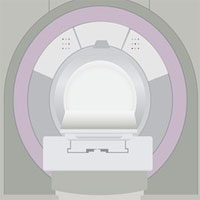Tag: pulmonary embolism

Effect of the Pulmonary Embolism Rule-Out Criteria on Subsequent Thromboembolic Events Among Low-Risk Emergency Department Patients
Does use of the pulmonary embolism rule-out criteria (PERC) in emergency department patients with low clinical probability of pulmonary embolism (PE) safely exclude the diagnosis of PE? Among very low-risk patients with suspected... read more

Prevalence of Pulmonary Embolism in Patients With Syncope
The results of the present study confirm that pulmonary embolism (PE) is rarely identified in patients presenting to the ED with syncope. Although PE should be considered as a differential diagnosis in every patient, not... read more

Risk of Venous Thromboembolism in Patients by Albuminuria and Estimated GFR
Albuminuria increases the risk for VTE markedly in patients with normal eGFRs compared with those with lower eGFRs. 15,180 (2.2%) VTE events occurred during the study period. Both albuminuria and eGFR were independently associated... read more

Diagnostic Accuracy of Point-of-Care Ultrasound Performed by Pulmonary Critical Care Physicians for Right Ventricle Assessment in Patients With Acute Pulmonary Embolism
This is the first study to evaluate pulmonary critical care fellows' and intensivists' use of goal-directed echocardiography in diagnosing right ventricular dysfunction in acute pulmonary embolism. Pulmonary Critical Care... read more

The YEARS Study – Simplified Diagnostic Management of PE
The clinical diagnosis of pulmonary embolism (PE) can be challenging given its variable presentation, requiring dependence on objective testing. Decision instruments such as PERC and the Wells' score help stratify patients... read more

Frequency of pulmonary embolism amongst patients admitted for first-time syncope
All patients admitted to an inpatient service for first-time syncope from the emergency departments of 11 Italian hospitals from 2012-2014 were evaluated for pulmonary embolism. Pulmonary embolism was found in 17.3% of patients... read more

FDA approves betrixaban for VTE prophylaxis
Betrixaban, a factor Xa inhibitor, has been approved for the prophylaxis of venous thromboembolism (VTE) in at-risk adult patients hospitalized with an acute illness, according to an announcement from the Food and Drug Administration.... read more

MRI in Pulmonary Embolism Diagnosis
Magnetic resonance imaging (MRI) has high specificity but limited sensitivity for the diagnosis of pulmonary embolism (PE), according to a systematic review published in the journal Thrombosis Research. Given these inconclusive... read more

Contrast-Induced Nephropathy: Confounding Causation
Comparing the methodological rigor of more recent CIN studies to those in the past, it seems clear that earlier studies purporting a causal relationship between AKI and contrast administration were only identifying an association... read more








